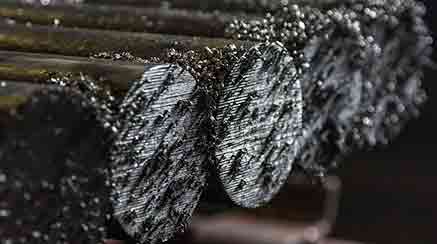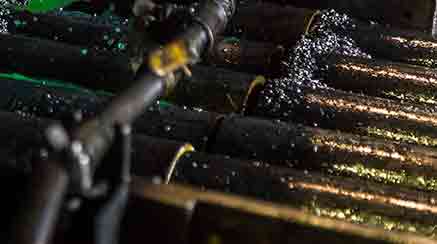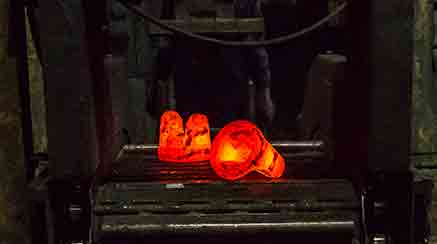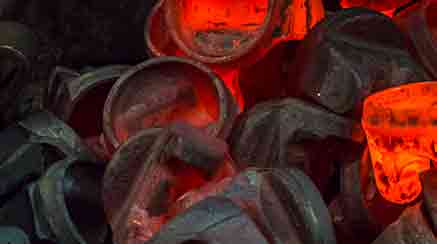
Forging is one of the oldest forms of metalworking. It produces parts and components that are stronger than those that are machined or cast. As metal is shaped during the forging process, its internal grain structure deforms to follow the general shape of the part or component.
As a result, the grain structure is continuous throughout the part or component, leading to superior strength characteristics, such as reliability at high stress points. As such, OEMs rely on forged products for critical "cannot fail" parts and components being used in airplanes, tractors, ships, automobiles, drilling and mining equipment, etc. These forged products also have to work well while in motion, such as gear components.
This metal forming can be accomplished by either "hot forging" or "cold forging" processes, both of which have multiple sub-categories. One of the most common processes is a type of hot forging known as impression die forging (also known as closed die forging), which is the process utilized by Rex Forge. This method uses powerful presses and/or hammers and relies on the shape of the dies, which are essentially cast impressions of the end product. The five steps of impression die forging are:
Pre-forged metal starts with metal blocks called "ingots," which come in a variety of shapes and sizes depending on the part or component to be produced. These ingots are heated to a near molten state where the metal still retains its shape but can be altered easily with force.

In order to form a piece of the ingot to be pressed between the closed dies, the heated ingot is edged and blocked with a press or hammer. Edging is done to increase the working cross section and blocking is implemented to refine the shape for finish forging.

To complete the shape, the preformed metal is forced into an impression between two dies; this is where the metal takes on the general shape of the end product. Simple items may only need one press, but more complicated items may require multiple strokes at different pressures or even different dies to design the final product.

By coordinating the cooling of the metal, forgers can increase the strength of the final product by deforming and optimizing the grain flow within the metal. A unique aspect of impression die forging is the "flash," which is the excess metal that flows outside of the dies. The flash cools and hardens rapidly causing it to be stronger than the metal in the dies. This forces the metal in the dies to completely fill any cavities.

Once a forged product has gone through the pressing process, trimming and other surface treatment operations are performed in order to improve the dimensional accuracy of the forged product. Surface treatment can be completed to enhance corrosion resistance and improve the appearance of the finished forged product.

However, the benefit is a low recurring cost for each forged part or component produced, thus becoming increasingly economical with volume. And, impression die forgings generally have about a 20% higher strength-to-weight ratio when compared to machined or cast parts of the same material. These characteristics make impression die forgings popular with automotive and tooling industries.
The two main types of presses are mechanical and hydraulic. Mechanical presses function by transforming the rotational force of a motor into a transitional force that preforms the pressing action. One advantage is that different forces are available at different stroke positions. Another advantage is that mechanical presses are faster than hydraulic ones. Hydraulic presses use fluid pressure and a piston to generate force. The advantages of a hydraulic press over a mechanical press are its flexibility and greater capacity. The disadvantages include a slower, larger, and costlier press to operate. Rex Forge uses mechanical presses due to the type and volume of forgings required by its customer base.
Other forging processes include drop forging (a form of open die forging), in which a piece of either hot or cold metal is repeatedly struck and deformed by a hammer to form a shape; and seamless rolled ring forging, in which a round ingot can be formed and manipulated to form rings of almost any diameter and thickness.